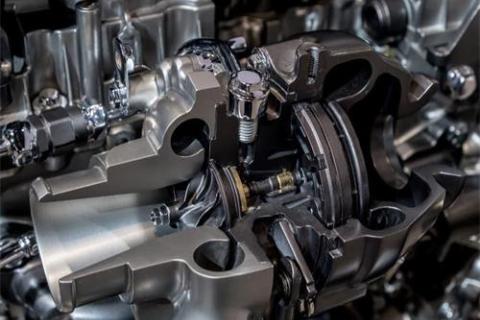
News
The market size of turbocharger directly depends on the output of internal combustion engine and the allocation rate of turbocharger in internal combustion engine. According to the different application fields of internal combustion engine, the downstream market of internal combustion engine can be divided into automobile engineering machinery, agricultural machinery, ships and generators. At present, the automotive market is the main application market of internal combustion engine and the main downstream market of turbocharger due to its largest production and sales scale. Take the Chinese market as an example. In 2021, the proportion of internal combustion engines for automobiles in China was 81.56% of the whole internal combustion engine market.
Turbochargers and superchargers are part of the two and are both classified as superchargers. Supercharger has the function of supplying pressurized air to the engine to improve the output power of the engine. Turbocharger and mechanical supercharger are to provide power for the engine, but because of the different performance, their advantages and disadvantages are different, so according to the use of appropriate use.
Recently, china-Laos railway opened to traffic in this road of friendship, chongqing ABB Jiangjin Turbocharger System Co., LTD. research and development and production of turbocharger, CRRC Qishuyan company newly built six HXN5B high-power shunting diesel locomotive operation, for the China-Laos railway along the Kunming Ningxia Erh Wild elephant Valley Mohan and other 6 large freight yard services, to ensure the power and efficiency of locomotive operation, help it smoothly perform the duty of shunting in frequent start and braking.
The principle of turbocharging technology is to use the high-temperature gas discharged from the combustion cylinder to drive the impeller of the turbine cylinder to rotate, and then drive the impeller of the compressor end to rotate through the bearing of the middle shell, so as to press the fresh air into the cylinder, so as to ensure the optimal ratio of burning air and fuel 14.7 As of November 2020, turbochargers can increase engine thermal efficiency by 10% to 40%, but with the continuous innovation of existing turbocharger technology, turbochargers may be able to boost engine thermal efficiency by 45% or more.
Open source Securities released a research report on December 06, the first to best buy rating, is expected in 2021-23 revenue of 10.86/13.15/1.636 billion yuan, net profit of 2.15/2.88/387 million yuan, EPS of 1.07/1.44/1.93 yuan/share, PE was 23.3/17.4/13 times. Rating reasons mainly include: 1) Turbocharger core components leading suppliers, cut into the new energy track prospects; 2) In the field of Deep plow turbo parts,the performance maintained stable growth;3) The extension mergers and acquisitions are carried out in an orderly manner, opening up growth space for new energy business.
Cosco Shipping Cosmos is the first flagship in the cosmos series of super large container ships independently designed and built by Jiangnan Shipbuilding Group for COSCO Shipping. It has a total length of 399.9 meters, a width of 58.6 meters, and a height of 72 meters. It has a design speed of 22 nautical miles per hour, a maximum load capacity of 198,000 tons, and can load 21,000 standard containers, reaching the largest level of container ships in the world compared with container ships built before. Cosco Shipping Cosmos has the advantages of advanced technology, excellent performance, energy conservation, environmental protection and high intelligence, which represents the highest level of shipbuilding technology in China.
Core industrial diesel turbochargers include Garrett Honeywell, BorgWarner, Cummins Turbo and MHI. Europe is the world's largest manufacturing region with a share of nearly 50 percent, followed by Asia Pacific and the Middle East and Africa with a share of about 35 percent and 15 percent, respectively.
First of all, the turbocharger is located in the engine intake and exhaust system, which increases the intake volume by compressing the air. At work, it uses the inertia impulse of the exhaust gas discharged from the engine to promote the turbine in the turbine chamber, thus driving the coaxial impeller, which then compresses the air to pressurize it into the cylinder.










